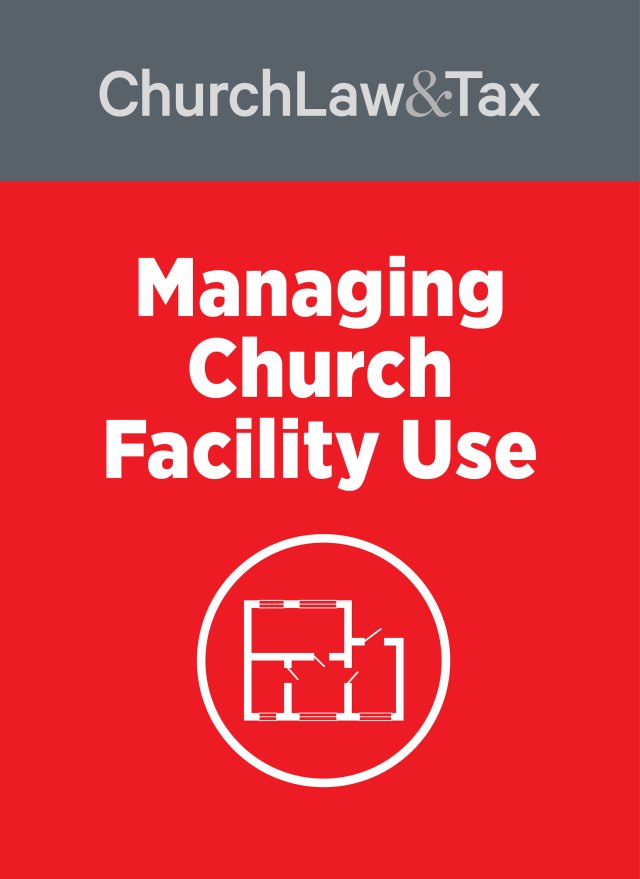Key point. Undeveloped land owned by a church may be exempt from property tax if it is used for church purposes, or is necessary to enhance the worship experience.
* The Maryland Court of Appeals ruled that 16 acres of undeveloped land owned by a church was exempt from property taxation. Maryland law exempts from taxation property that is "owned by a religious group or organization" if the property "is actually used exclusively for (1) public religious worship; (2) a parsonage or convent; or (3) educational purposes." In 1990, a church purchased a 27-acre tract of property in order to construct a sanctuary. A local zoning board limited construction on the property to a 7.5-acre "envelope" except that "the construction of driveways, road improvement, storm water management, utilities or other such improvements" could take place outside of the development envelope. A tax assessor determined that only 11 acres were exempt from property tax (the 7.5-acre envelope plus 3.5 acres that were used for storm water management and a septic system). The assessor concluded that the remaining 16 acres, consisting of undeveloped land, were subject to tax. The church appealed this decision, and a trial court ruled that the entire 27 acres was exempt. The court concluded that the entire tract should be viewed as a "package," and that all 27 acres were used exclusively for religious worship. It relied on the testimony of the pastor who observed that the undeveloped 16 acres enhanced "the worship of the congregation and the beauty of the building." Characterizing the church building and the land on which it is built as "one fabric," the pastor concluded that the church would not be the same without the surrounding lands. The case was appealed to the Maryland Court of Appeals (the highest state court in Maryland). The court began its opinion by noting that "tax-exemption statutes are to be strictly construed in favor of the taxing authority" and that "if any real doubt exists as to the propriety of an exemption that doubt must be resolved in favor of the state." Nevertheless, the court concluded that the entire 27 acres was entitled to exemption from property tax, including the undeveloped 16 acres. The court observed,
What is disputed is whether these 16 acres are used, actually and exclusively, for religious worship, whether their being a part of the church site—the lot on which the church is built, if you will—constitutes a sufficient use to justify the application of the exemption to them …. The 16 acres are part of the land on which the church sits and that parcel is not subject to another, non- church use. The applicable covenants and zoning restrictions prohibit that property from being put to other than open space use; there simply can be no commercial, residential, or other non-worship related development on that property. The land, then, may be used only for church purposes, either in tangible, such as the construction of a prayer garden, or in non-tangible, i.e. reflective or spiritual, ways …. A church is more than four walls built of stone, marble or concrete …. In the present case, it does not follow that, merely because the church has been required, or decided, to leave a large portion of the church property undeveloped, the property is not being used—it clearly is as the site of the church—or that the congregation will not use the property in its natural state to enrich its worship experience. Testimony from [the pastor] indicated that the religious use of the entire parcel would "enhance the worship of our people, and would enhance the beauty of our building, which is very important." Further, he stated that the church would not be the same without the surrounding land, "It’s just one fabric. There’s no demarcation or anything such as that. It’s a total—total piece."
Nor is there any merit to the argument that the use of the 16-acre tract is not related to the furtherance of public worship …. The primary purpose of the non-developed land is to preserve the environmental aesthetics of the neighboring community and present the primary structure in a visually pleasing and understated manner. The development envelope is balanced by the open space, non-use area, much as a garden, lawn, or yard balances many residential parcels.
Where a portion of a parcel of real property on which a church has been constructed is, by virtue of zoning and covenants restricted to open space use, thus prohibiting any other use, that does not serve automatically to demarcate the parcel, nor does it necessarily serve to infringe, usurp, or preempt the primary use of the property. In this case the 16 acres provide a natural setting for the church and, thus, the religious worship use. As such, they are being actively used by the church for religious worship.
Application. Many churches own undeveloped property adjacent to their sanctuary. The tax status of such property often is in doubt. This case serves as strong support for the view that such property must be viewed as inseparable from the church itself (like the front lawn of a residence) and therefore is entitled to exemption. This conclusion is reinforced by the fact that the decision is by the highest state court in Maryland—the Court of Appeals. Supervisor of Assessments v. Keeler, 764 A.2d 821 (Md. 2001).
© Copyright 2002 by Church Law & Tax Report. All rights reserved. This publication is designed to provide accurate and authoritative information in regard to the subject matter covered. It is provided with the understanding that the publisher is not engaged in rendering legal, accounting, or other professional service. If legal advice or other expert assistance is required, the services of a competent professional person should be sought. Church Law & Tax Report, PO Box 1098, Matthews, NC 28106. Reference Code: m70 c0302




